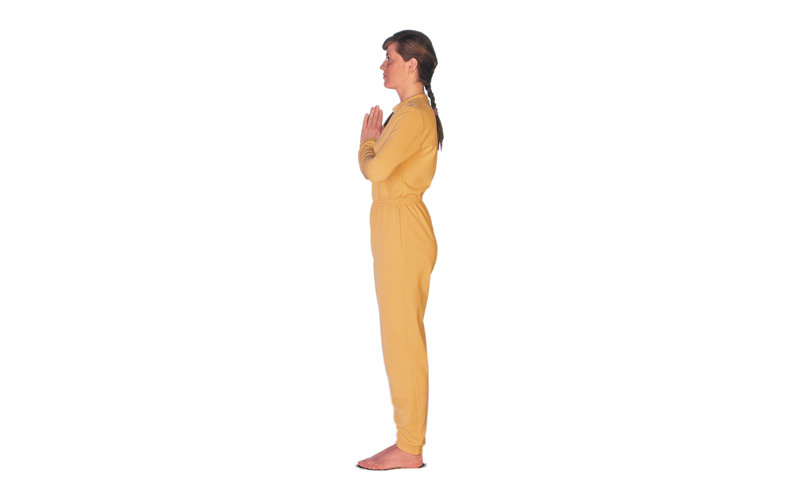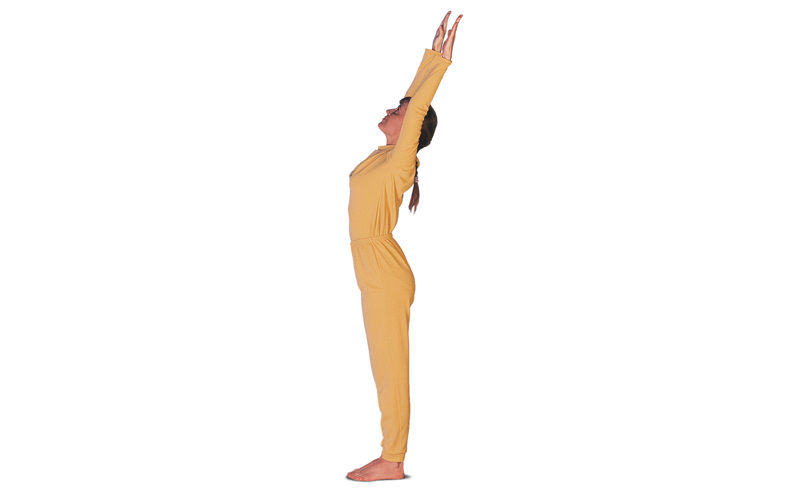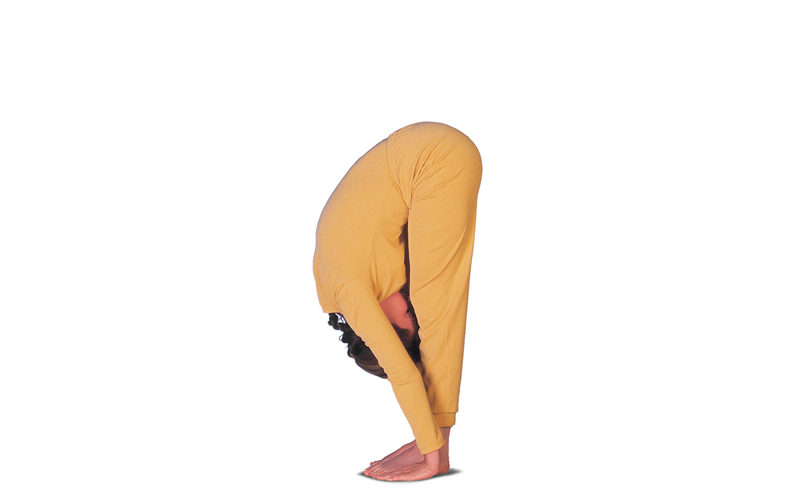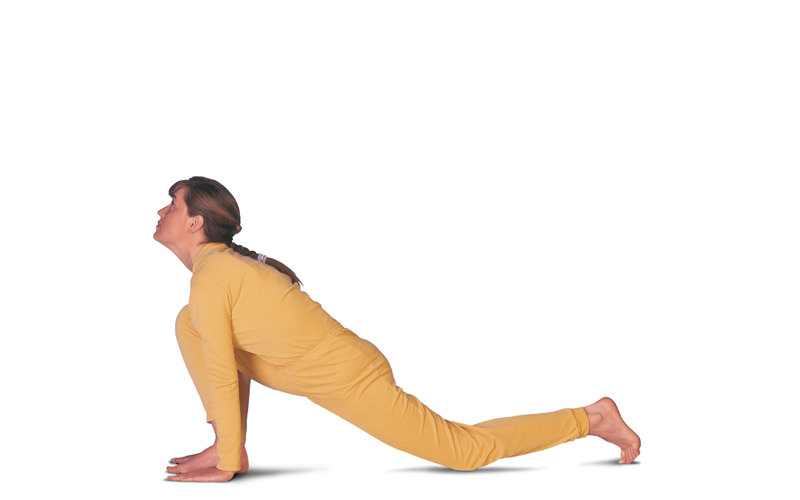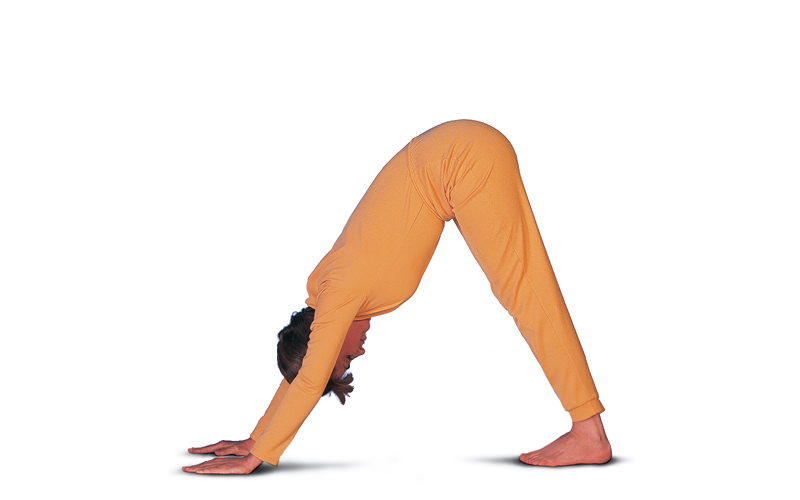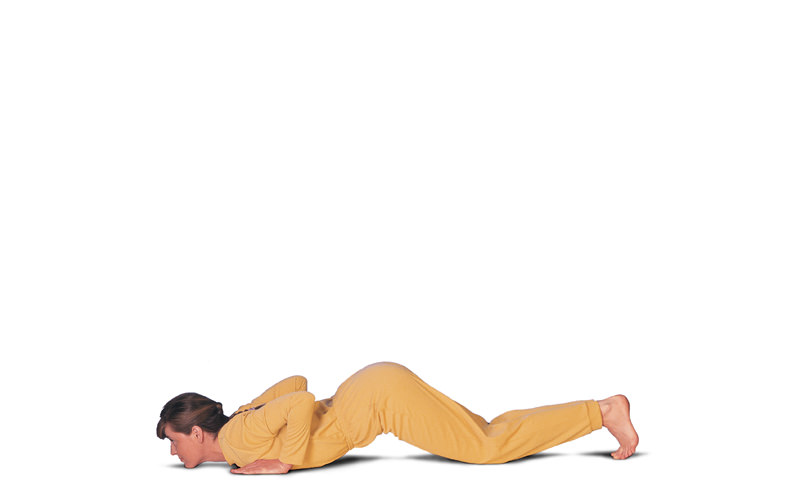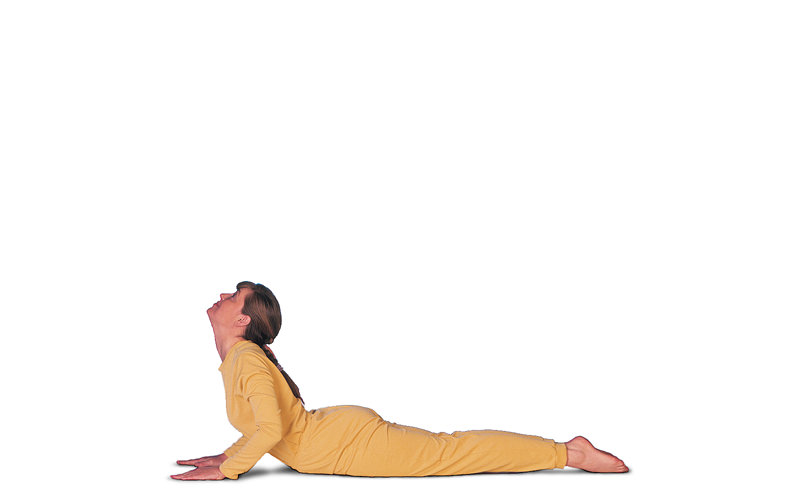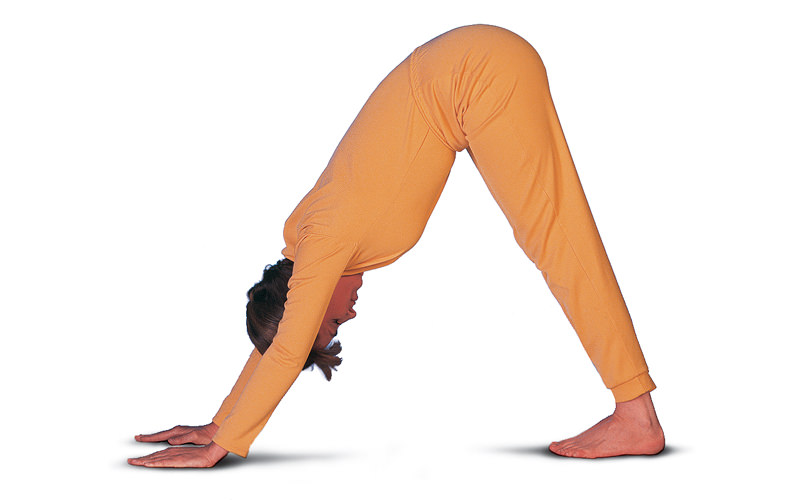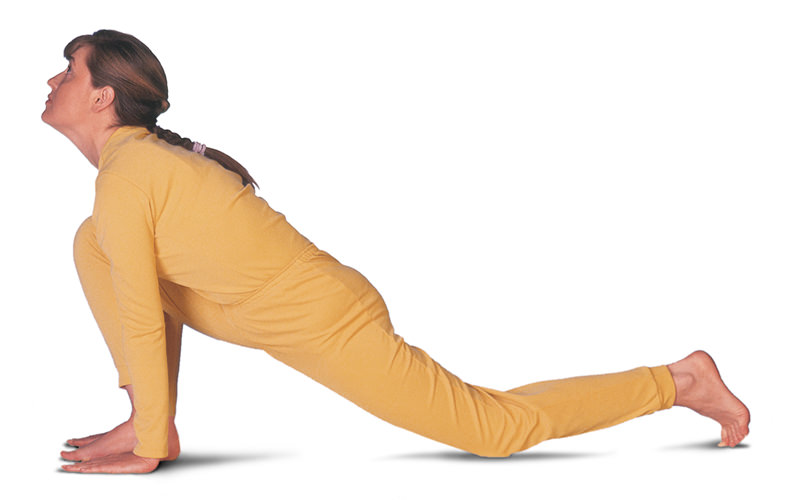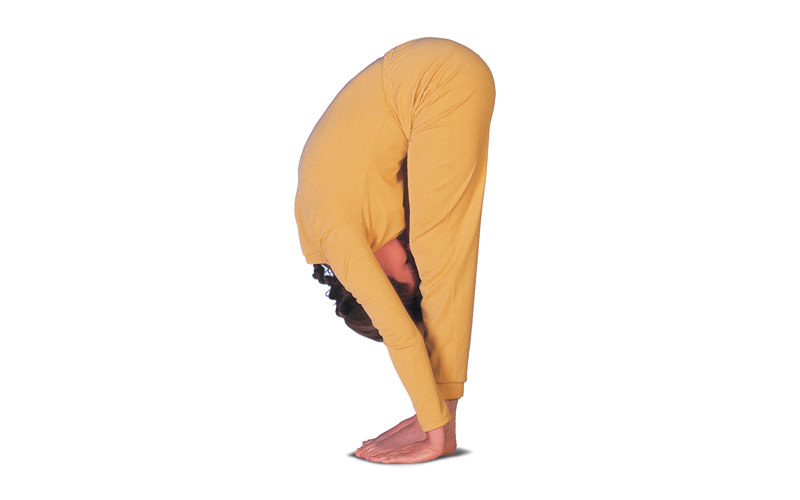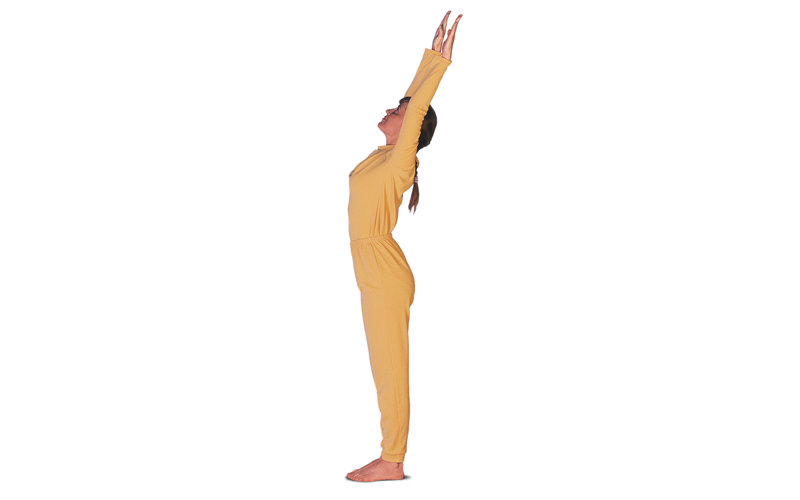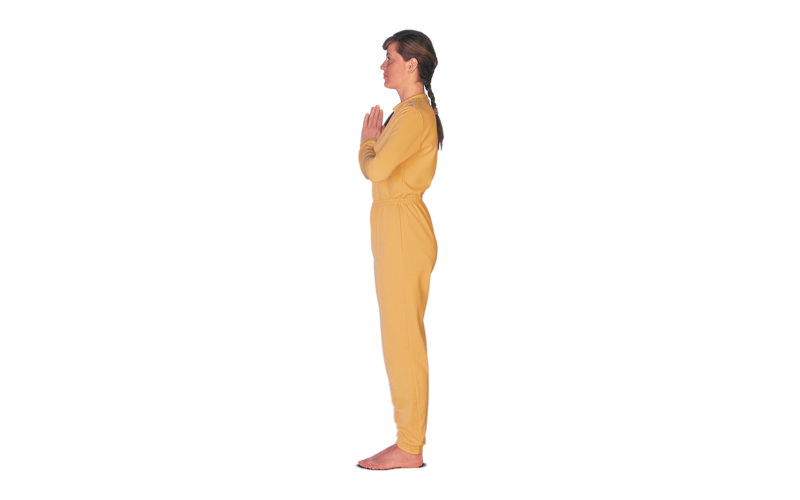Ancients viewed Sun as the visual representation of the Divine on the earth. Some ancient texts identify Sun as the energetic and creative aspect of Siva and Vishnu, referred to as, “Surya Narayana (Sun God)”. Prashnopnishad (1:5) says, “Aditya ha vai Prano”, “Sun indeed is that Prana (the cosmic energy)”. In Vedic astrology Sun represents will power, fame, vitality, courage, power and authority.
Recovering from a major medical condition, I designed a practice routine of Sun Salutations (Surya Namaskara) and activation of chakras (energy centers in the body) with energizing visualizations and affirmations of powerful thoughts and feelings. It’s a practice I have come to love and still continue to practice it regularly for a vigorous and energetic start of the day.
And now I invite YOU to try it. As this practice has done for me, I believe it can revitalize a person in the morning, augment the faculties of concentration and visualization and wake up every cell of the body. The practice targets to stoke the “flames” of internal fire (agni) and energy (prana) across the vital energy centers referred to as, the chakras. It sets the tone of the day for me with inspiration and prepares me to face any challenges that come my way during the course of the day.
The practice involves visualizing the internal Sun* (your own fountain of energy, light and fire) in various chakras in a specific order and maintaining the visualization in the chakra (dharna) while performing a series of Sun Salutations. Chanting of Samskrita mantras while coming out of the Sun Salutation is optional. You may instead repeat it silently in your head or, substitute it with a short English phrase to infuse you with energy and inspiration.
Here onwards, internal sun will be spelled with capital “Sun”.
The origins of this practice can be traced back to an ancient prayer to Sun,Aditya Hradayam in Valmiki Ramayana. Valmiki Ramayana is one of the two major Indian epics, the other one being Mahabharata estimated to be 2500-3000 years old. Aditya Hradayam is made of two words, Aditya, another name of sun and Hradayam literally means “heart”. Aditya Hradayam in this context can mean “Sun in the heart,” “meditation on Sun,” “prayer of Sun from heart” or, “praying to that Sun which resides in the heart.” It is the last one that speaks to my heart because it is consistent with the Vedic concept prevalent in those times. The external sun is the representation of the internal Sun, the source of energy, warmth and light which is present inside all of us. It is the internal Sun to which we pray in the Gayatri mantra, “Om bhur bhuva svah, tat saviturvarenyam. Bhargo devasya dhi mahi, dhiyo yo no prachodayat (Savitur i.e. Savita=Sun).”
It would be worth our while to review the legend associated with Aditya Hradayam from Valmiki Ramayana which can evoke appropriate imagery, mood and feelings (bhavana) for our practice.
Here is a brief summary of the story:
The battle between King Rama (the Hero of the Ramayana epic) and his formidable opponent Ravana goes on for several days and nights with no end in sight. King Rama is exhausted by the fight and engulfed with worry as none of his powerful weapons seem to work and undaunted Ravana still keeps coming back for even more fierce fight. Seeing Rama discouraged and preoccupied in his thoughts, Sage Agastya appears and reveals the secret practice of sun meditation, Aditya Hradayam and advises him to recite Aditya Hradayammantras three times with one pointed concentration and that would help him overcome all his fears and doubts and grief, prolong his life and bring him victory.
Upon completion of the Sun meditation and Aditya Hradayam mantras, Rama was filled with extraordinary energy, vigor and composure, fought with great determination and courage and eventually destroyed the enemy.
(Valmiki’s Ramayana, Yudha Kanda, section 105)
In the centuries to follow sages developed various rites and practices based onAditya Hradayam. One of these practices is Aditya Hradayam Surya Namaskarain which a practitioner performs a series of Sun Salutations while visualizing Sun in specified chakras and reciting mantras based on the various names of Sun.
We all face obstacles and hurdles that sometimes can appear too daunting to overcome, be that an intimidating project with fast approaching deadlines, a boss with unrelenting demands, an entangled relationship or an unpaid loan. They are the “Ravanas” of the “battle field” of our lives. Some days instead of wanting to get out and face the world, we want to “retreat” to our bedroom and hide. In times like that, how about exploring Aditya Hradayam Surya Namaskarapractice and see if that could work for you? It surely gives me a jump start and set the tone right for my day!
ADITYA HRADAYAM SURYA NAMASKARA PRACTICE
Here is the schema of twelve Sun Salutations (SS) with chakras and mantras:
SS#
Chakra
Mantra
1ST
Heart Center (Anahat)
Om Mitraya Namah!
2ND
Throat Center (Vishuddhi)
Om Ravaye Namah!
3RD
Pelvic Center (Svadhishthana)
Om Suryaya Namah!
4TH
Eyebrow Center (Ajnya)
Om Bhanave Namah!
5TH
Throat Center (Vishuddhi)
Om Khagaye Namah!
6TH
Navel Center (Manipura)
Om Pushne Namah!
7TH
Pelvic Center (Svadhishthana)
Om Hiranyagarbhaye Namah!
8TH
Throat Center (Vishuddhi)
Om Marichye Namah!
9TH
Eyebrow Center (Ajnya)
Om Adityaye Namah!
10TH
Pelvic Center (Svadhishthana)
Om Savitre Namah!
11TH
Throat Center (Vishuddhi)
Om Arkaya Namah!
12TH
Heart Center (Anahat)
Om Bhaskaraya Namah!
Note, in this version of the Aditya Hradayam Surya Namaskara, Sun is visualized 4 x in the Throat Center (Vishuddhi chakra)
3 x in the Pelvic Center (Svadhishthana chakra)
2 x each in the Eyebrow Center (Ajnya chakra) and the Heart Center (Anahat cakra) and 1 x in the Navel Center (Manipura Chakra).
We start and end the series of Sun Salutations with the Heart Center visualizing and holding the Sun in the heart.
CHAKRAS
Chakras are the focal point of psychic energy and consciousness located in specific parts of the body. Candace Pert calls them “the mini brains” in the body.
The seven chakras, their respective sites and their characteristic qualities are listed below:
CHAKRA / SITE / QUALITY
Sahasrara / Crown / transcendence, inspiration, independence
Ajnya / Eyebrow Center / intuition, intelligence, discrimination
Vishuddhi / Throat Center / communication, refinement, transcendence
Anahat / Heart Center / love, openness, compassion
Manipura / Navel Center / empowerment, self-esteem, health
Svadhishthana / Pelvic Center / vitality, passion, creativity
Muladhara / Perineal floor / stability, security, strength
This practice focuses only on five chakras, namely, Ajnya, Vishuddhi, Anahat, Manipura and Svadhishthan chakra and omits the Muladhar and Sahasrara Chakra. Since ajnya, the Eyebrow Center, involves the area from the eyebrow to the midbrain, you may, if you like, combine the Ajnya and Sahasrara Chakra and visualize sun from eyebrows and midbrain to the top of the crown.
Muladhar Chakra, the Perineal Center, is omitted in this routine. You may at appropriate junctures, if you like, activate Muladhar Chakra by contracting and releasing the muscles of the perineal floor while performing Sun Salutation, e.g. when in the Downward Dog phase (Adhomukha Shvanasana) or Upward Facing Dog Pose (Urdhavamukha Svanasana).
Simply have to bring their mind to focus on the site of the chakra, that specific body part (heart, throat, pelvis etc.) and visualize Sun in that part of the body.
ADITYA HRADAYAM MANTRAS
Mantras are chanted as you bend forward in Uttansana in order to perform Sun Salutation. If you like you may say the mantra silently in your head. Some prefer chanting Samskrita mantra for their vibratory effect (spandan), meaning (artha) and feeling (bhavana). Artha and bhavana for each Aditya Hradayam mantra is provided elsewhere[i].
If you prefer, you may compose a brief phrase in English with a similar meaning and feeling (bhavana) to accompanying your Sun Salutations[ii].
VISUALIZATION AND SILENT AFFIRMATIONS
The practice involves energizing visualizations and affirmations consisting of the images, thoughts, beliefs and images while you perform Sun Salutations.
Visualization in this context suggests you bring your mind to a particular part of the body (chakra) and see, think, recall or verbalize something related to sun. If you are one of the people who close their eyes and try to visualize something but see nothing? Relax! You don’t have to SEE in order to visualize, you may think, imagine or recall memories of sun. Even silently saying the word, “sun” creates a cascade of events in the body and mind. There may be certain qualities and functions of the sun that please you. Feel those feelings in your body, heart and mind throughout the practice. Feel the warmth, light and energy of Sun in the respective Chakra site.
Silent affirmations consist of energizing thoughts, beliefs and feelings that affirm and support the desired or aspired qualities and strengths you want to see expand in your life. Specific thoughts, feelings and beliefs are provided in the Practice Proper for each Sun Salutation, which are based on the energetic qualities of respective chakras and the meaning of Aditya Hradayam mantras.
PRACTICE PROPER
PREPARATORY VISUALIZATION AND AFFIRMATIONS
Stand attentively and comfortably. Visualize Sun starting with the Eyebrow Center (Ajnya Chakra) and going down visualizing Sun through the Throat Center (Vishuddhi Chakra), Heart Center (Anahat Chakra), Navel Center (Manipura Chakra) and the Pelvic Center (Svadhishthana Chakra).
Then move up in the reverse order from the Pelvic Center to the Eyebrow Center, but this time with this time with corresponding silent affirmations and visualization of Sun.
MODIFIED SUN SALUTATION
Classical Sun Salutation includes Chaturanga, that is, prone position on all fours with chest off the floor. Multiple repetitions of Chaturanga especially in the morning can be hard on the shoulders.
Here is an adaptation of Classical Sun Salutation that does not involveChaturanga:
- Tadasana with Anjali mudra (Mountain Pose with hands in prayer fashion) visualization [Inhale-Exhale]
- Urdhva Baddh Hastasna (Mountain Pose with Bound Hands in mild backbend) [Inhale]
- Uttanasana (Extended forward bend) [Exhale]
- Ashvarohana (lunge) [Inhale]
- Adhomukha Shvanasana (Downward Facing Dog Pose) [Exhale]
- Chakravakasana (Cat Pose) [Inhale] 7.* Vajrasana* (Diamond pose) [Exhale]
- Urdhvamukha Shvanasana (Upward Facing Dog Pose) [Inhale]
- Adhomukha Shvanasana (Downward Facing Dog Pose) [Exhale]
- Ashvarohana (lunge) [Inhale]
- Uttanasana (Extended forward bend) [Exhale]
- Tadasana with Anjali mudra (Mountain Pose with hands in prayer fashion) [Inhale-Exhale]
SUN SALUTATION 1
Assume the standing position for Sun Salutation with palms joined at the Heart Center (Anahat Chakra). Visualizing Sun in your heart, raise arms and perform a mild backbend. While exhaling and bending forward towards the toes, slowly chant “Om Mitraya Namah!”
Until the completion of the sun salutation, maintain visualization in the heart center along with feelings/ emotions that the powers of the universe are here to help you and your heart is full of love, joy and compassion for all.
SUN SALUTATION 2
Visualizing Sun in the Throat Center (Vishuddhi Chakra), raise arms and perform a mild backbend. While exhaling and bending forward towards the toes, slowly chant, “Om Ravaye Namah!”
Until the completion of the sun salutation, maintain visualization in the throat center feeling and believing you are gifted with the perfect ability to communicate your ideas and emotions effectively and transcend all barriers even under the most difficult situations.
SUN SALUTATION 3
Visualizing Sun in the Pelvic Center (Svadhishthana Chakra), raise arms and perform a mild backbend. While exhaling and bending forward towards the toes, slowly chant, “Om Suryaya Namah!”
Until the completion of the sun salutation, maintain the visualization while feeling and believing you are now directly connected with the Cosmic Pool of unlimited creativity, vitality and passion from which you can draw as much and whenever you wish.
SUN SALUTATION 4
Visualizing Sun in the Eyebrow Center (Ajnya Chakra), raise arms and perform a mild backbend. While exhaling and bending forward towards the toes, slowly chant, “Om Bhanave Namah!”
Until the completion of the sun salutation, maintain the visualization in the eyebrow center while feeling and believing you now have direct access to the Cosmic Mind, the source of unlimited intelligence and intuition upon which you can draw as much and whenever you wish.
SUN SALUTATION 5
Visualizing Sun in the Throat Center (Vishuddhi Chakra), raise arms and perform a mild backbend. While exhaling and bending forward towards the toes, slowly chant, “Om Khagaye Namah!”
Until the completion of the sun salutation, maintain the visualization while feeling and believing you are gifted with the perfect ability to communicate your ideas and emotions effectively, and transcend all barriers even under the most difficult situations.
SUN SALUTATION 6
Visualizing Sun in the in the Navel Center (Manipura Chakra) raise arms and perform a mild backbend. While exhaling and bending forward towards the toes, slowly chant, “Om Pushne Namah!”
Until the completion of the sun salutation, maintain the visualization while feeling and believing Sun is constantly nourishing you and with its myriad rays is showering you with formidable strength and perfect health.
SUN SALUTATION 7
Visualizing Sun in the Pelvic Center (Svadhishthana Chakra) raise arms and perform a mild backbend. While exhaling and bending forward towards the toes, slowly chant, “Om Hiranyagarbhaye Namah!”
Until the completion of the sun salutation, maintain the visualization while feeling and believing you are now directly connected with the Cosmic Pool of unlimited creativity, vitality and passion from which you can draw as much and whenever you wish.
SUN SALUTATION 8
Visualizing Sun in the Throat Center (Vishuddhi Chakra), raise arms and perform a mild backbend. While exhaling and bending forward towards the toes, slowly chant, “Om Marichye Namah!”
Until the completion of the sun salutation, maintain the visualization, feeling and believing you are gifted with the perfect ability to communicate your ideas and emotions effectively, and transcend all barriers even under the most difficult situations.
SUN SALUTATION 9
Visualizing Sun in the Eyebrow Center (Ajnya Chakra), raise arms and perform a mild backbend. While exhaling and bending forward towards the toes, slowly chant, “Om Adityaya Namah!”
Until the completion of the sun salutation, maintain the visualization feeling and believing you now have direct access to the Cosmic Mind, the source of unlimited intelligence and intuition upon which you can draw as much and whenever you wish.
SUN SALUTATION 10
Visualizing Sun in the Pelvic Center (Svadhishthana Chakra), raise arms and perform a mild backbend. Bending forward towards the toes and exhaling, slowly chant, “Om Savitre Namah!”
Until the completion of the sun salutation, maintain the visualization while feeling and believing you are now directly connected with the Cosmic Pool of unlimited creativity, vitality and passion from which you can draw as much and whenever you wish.
SUN SALUTATION 11
Visualizing Sun in the Throat Center (Vishuddhi Chakra), raise arms and perform a mild backbend. While exhaling and bending forward towards the toes, slowly chant, “Om Arkaye Namah!”
Until the completion of the sun salutation, maintain the visualization while feeling and believing you are gifted with the perfect ability to communicate your ideas and emotions effectively, and transcend all barriers even under the most difficult situations.
SUN SALUTATION 12
Bring palms to the Heart Center (Anahat Chakra) in order to perform the last round of Sun Salutation. Visualizing Sun in your heart, raise arms and perform a mild backbend. While exhaling and bending forward towards the toes, slowly chant “Om Mitraya Namah!”
Until the completion of the sun salutation, maintain visualization in the heart center along with feelings/ emotions that the powers of the universe are here to help you and your heart is full of love, joy and compassion for all.
ENDING THE PRACTICE
Continue to stand or, sit down in a comfortable position. Visualize Sun starting with the Eyebrow Center (Ajnya Chakra) and going down through the Throat Center (Vishuddhi Chakra), Heart Center (Anahat Chakra), Navel Center (Manipura Chakra) and the Pelvic Center (Svadhishthana Chakra). Then move up in the reverse order visualizing Sun from the Pelvic Center to the Eyebrow Center.
Finally, hold the Sun in your Heart Center, feel the light, energy and warmth of Sun circulating in the entire body from head to toes and toes to head. To intensify the effect, imagine the breath is moving in and out from the Heart Center. After establishing the “heart breathing,” feel that with each incoming breath, pure light, warmth and energy expand in the Heart Center and with outgoing breath they spread throughout the body.
If time permits, visualize yourself working on your task with vigor and determination and accomplishing incredible results.
CONCLUDING REMARKS
The flow gets better with abhyasa (practice) Aditya Hradayam Surya Namaskarais a highly integrated mind-body task involving visualization, silent affirmations and chanting interwoven within the sequence of breath-coordinated movements. You will be richly rewarded for the time you invest in learning the various steps of this “dance” of asanas, chants, visualizations and affirmations. With abhyasa, over time, you can maintain the flow and the tempo you want.
The morning practice of Aditya Hradayam Surya Namaskara can provide you an opportunity to sharpen your physical, mental and spiritual “tools.” It has been said that skilled workers sharpen their tools before getting started with the day’s work!
- “Om Mitraya Namah!” “I bow to Sun, Protector of Love and Friendship!”Bhavana: Love, joy, support, and compassion.
- “Om Ravaye Namah!” “I bow to Sun, Giver of Prana!” (Ravi is Pingala, the solar passage of vital air, Prana).Bhavana: Expansion of Prana, strength and energy
- “Om Suryaya Namah!” “I bow to the Radiant Sun!” (Surya, depicted with the golden arms on a golden chariot, manifesting rainbow in the skies, the light on earth and the seven chakras in the body).Bhavana: Vitality, exuberance and abundance of everything desired
- “Om Bhanave Namah!” “I bow to the Lustrous (radiant) Sun, Giver of Light and Intelligence!”Bhavana: gifted with extraordinary intelligence, intuition and memory
- “Om Khagaye Namah!” “I bow to the Soaring Sun!” (Literally, “Bird of the Skies.”Bhavana: Aspirations and ideals
- “Om Pushne Namah!” “I bow to the Nurturing Sun!”Bhavana: Strength, health and nourishment
- “Om Hiranyagarbhaye Namah!” “I bow to the Creative Sun!” (Hiranyagarbhah = “Golden Womb” or, “Golden Seed,” the first creation of the Self-existent)Bhavana: Creativity, innovation, learning
- “Om Marichye Namah!” “I bow to Sun of Speed and Velocity!” (Marichiwas the Chief of Maruts, the storm gods who brought water to earth)Bhavana: Accelerated growth, momentum, swift progress
- “Om Adityaya Namah!” “I bow to the Perfect Sun!” (Aditya in ancient scriptures described as pure and perfect)Bhavana: Success and perfection in all endeavors
- “Om Savitre Namah!” “I bow to Sun, Giver of Life and Light!” (Savita or Sun from which Savitre and Savitur are derived is prayed in Gayatrimantra for enlightenment and inspiration)Bhavana: Inspiration and guidance from something bigger than ourselves, the Cosmic Mind
- “Om Arkaya Namah!” I bow to Sun, Remover of Impurities and Afflictions” (“Arka” means “fire,” “flash of lightning” or, medicinal extract that heals)Bhavana: Conquest of all obstacles and afflictions
- “Om Bhaskaraya Namah!” “I bow to Sun, the Harbinger of Light” (Bhaskara literally means the “Light maker.”)Bhavana: Expansion of inner light and love
-
Starting Position:
Standing (with legs together)Concentration:
on the position of the relevant Chakra or on the whole bodyBreath:
coordinate with movement, or normal breathing in the positionRepetitions:
2–12 roundsPractice:
Stand with legs together and concentrate on the whole body.- Bring palms together in front of the chest.
- Inhaling keep arms parallel and raise them above the head. Palms face the front. Look up.
- Exhaling bend forward until the palms or fingers touch the floor beside the feet, or as far as possible. The knees remain straight.
- Inhaling take a long step backwards with the left leg and place the knee on the floor. The toes of the left foot are tucked under. The right foot remains between the hands with the sole of the foot flat on the floor. Look up.
- Exhaling bring the right foot back beside the left, raise the buttocks and straighten the legs. Look towards the navel. The soles of both feet stay flat on the floor. The body weight is equally distributed between the hands and feet. Hips are raised so the body looks like a mountain.
- Holding the breath bring the knees, chin and chest to the floor. The toes are tucked under and hips are lifted from the floor. Concentrate on the whole body. Arms are bent with elbows tucked in and hands under shoulders.
- Inhaling press the hips to the floor and lift the trunk upright (Bhujangasana). The feet lie flat along the floor and hands are under the shoulders.
- Exhaling, tuck the toes under and raise the buttocks high, straighten the legs and look towards the navel. The soles of both feet stay flat on the floor. The body’s weight is equally distributed between hands and feet.
- Inhaling bring the left leg forward with a large step. Lower the right knee to the floor and tuck the toes of the right foot under. The left foot is between the hands. The sole of the foot is flat on the floor. Look up.
- Exhaling place the right foot beside the left and straighten the legs. The upper body hangs down, the palms or fingers touch the floor. Knees remain straight.
- Inhaling keep both arms parallel, raise them above the head and look up.
- Exhaling lower the hands into prayer position at chest level and return to the starting position.
- These 12 positions form one round. In the next round, step the right leg back in Position 4 and forward in Position 9. Alternate the legs in each round.
Surya Namaskara with Mantra and Concentration on the Chakras.The sun symbolises light, purity, clarity and consciousness. Regular practice of Surya Namaskaraimparts the power and radiance of the sun, that is why it is known as “Salute to the Sun”.This practice can also be performed with special concentration on each Chakra, with the correspondingSurya Namaskara Mantra chanted or repeated mentally before the change of each position.Position Mantra Concentrate on 1 OM MITRĀYA NAMAHA ANAHATA CHAKRA 2. OM RAVAYE NAMAHA VISHUDDHI CHAKRA 3. OM SŪRYĀYA NAMAHA MANIPURA CHAKRA 4. OM BHĀNAVE NAMAHA ANAHATA CHAKRA 5. OM KHAGĀYA NAMAHA SAHASRARA CHAKRA 6. OM PŪSHNE NAMAHA THE WHOLE BODY 7. OM HIRANYAGARBHĀYA NAMAHA SVADHISHTHANA CHAKRA 8. OM MARĪCHAYE NAMAHA SAHASRARA CHAKRA 9. OM SAVITRE NAMAHA ANAHATA CHAKRA 10. OM ARKĀYA NAMAHA MANIPURA CHAKRA 11. OM ĀDITYĀYA NAMAHA VISHUDDHI CHAKRA 12. OM BHASKARĀYA NAMAHA ANAHATA CHAKRA The Benefits of the Individual Positions:- Position 1 + 12:Improves the ability to concentrate and calms the nervous system and mind. The Anahata Chakra is balanced.
- Position 2 + 11:The front of the body is open and stretched, stimulating blood circulation. The Vishuddhi Chakra is stimulated. Beneficial for chronic throat problems.
- Position 3 + 10:Stretches the back muscles and the muscles at the back of the thighs. Activates the solar plexus and the Manipura Chakra. The digestive system is stimulated. The head receives a good supply of blood, which has a favourable influence upon the eyes, ears and memory.
- Position 4 + 9:The pressure of the thigh stimulates the digestive organs. The leg and back muscles are strengthened. The Anahata Chakra, solar plexus and Manipura Chakra are balanced.
- Position 5 + 8:Regulates the nervous system. Strengthens arm, leg and back muscles and stretches muscles at the back of the legs. The increased blood supply to the head has a favourable influence upon brain functions, eyes and ears, and stimulates the Sahasrara Chakra.
- Position 6:Encourages diaphragmatic breathing, stretches the spine and is beneficial on lower abdominal organs. Balances the whole body.
- Position 7:Strengthens arm, shoulder and back muscles. Promotes flexibility of the spine and improves posture, thereby helping to prevent slipped discs. Stimulates digestive function. The Svadhishthana Chakra is balanced.
Benefits:
Stimulates circulation, improves physical fitness, the ability to concentrate, mental stability and spiritual development.Caution:
Avoid this sequence with high blood pressure or dizziness.After this exercise relax in AnandasanaDo you know the significance of Surya Namaskar(Sun Salutation)?
Today, Surya Namaskar is sometimes reduced to just a set of preparatory warm-up exercise in a yoga practice. The original understanding of this practice and benefits had been lost because many teachers are not interested in the sacred sentiments of this beautiful practice. I had the fortune of meeting a living enlightened master who revived the body language of yoga according to Patanjali, the father of Yoga. My own practice of Surya Namaskar had been completely transformed when it was practiced with bija mantra, slow breathing, chakra awareness and above all, in deep gratitude and devotion. Let me share it with my readers.Surya Namaskar is sometimes translated as the eternal salutations to the Sun. Suryameans ‘sun’ and Namaskar means ‘salutations’. The practice of Surya Namakar is to awaken our body intelligence to directly create energy from the sun. In the Vedic Tradition, the Sun is symbolic of consciousness and therefore has been worshipped daily in this culture. Our body is equipped with the innate intelligence to produce energy from the sun directly. The premise of this understanding comes from the belief that human body is the ultimate bio-organism on planet earth because it is the most evolved storehouse of the enormous intelligence of all the other bodies on earth. The wisdom of the ages is stored in each and every cell. Every cell in our body actively responds to the internal and external stimuli. If the plants can produce energy directly from the Sun, why can’t man? After all, every human being is made up of the same 5 elements as the Universe.The Sun Salutation is designed to access the etheric energy all around us. Every morning at dawn, when the sun bursts on the horizon, the air is filled with prana shakti, life energy. When performed facing the East in the first rays of the morning sun along with the appropriate breathing technique and mantra (vibration), the effect on the individual mind, body and spirit is phenomenal.It is said that a daily practice of Surya Namaskar comprising a complete set of 12 repetitions is enough to reap enormous spiritual benefits. The practice of Sun Salutation is designed to work on all body parts, every organ, every system and every chakra(energy center). It is a moving set of postures (vinyasa) done dynamically with the appropriate breathing. Of all the asana practice, the Surya Namaskar is well known for being the most effective way to limber up, to tone and stretch as well as strengthen the entire body and the spine. It is also the quickest way of touching base with our core inner strength.- Surya Namaskar Mantra. A mantra is a composition of syllables, words, phrases that when repeated with awareness has a very powerful and penetrating influence on the mind. When done with bija (seed) mantra chanting, it is transformed into a deep cleansing process that ‘unclutches’ our mind from our personal identity. Each mantra ends with “namaha” which refers to surrendering the identity. Whenever we perform Surya Namaskar, our awareness, inner sun throws light on our true identity which is Divinity. Here are the 12 mantra with its meaning.
Om Hram mitraya namaha (Salutations to the Friend of all)Om Hrim ravaye namaha (Salutations to the Shining One)Om hroom suryaya namaha (Salutations to One who induces activity)Om hraim bhanave namaha (Salutations to the One who illumines)Om hraum khagaya namaha (Salutations to the One who moves swiftly)Om hraha pushne namaha (Salutations to the Giver of Strength)Om Hram hiranya garbhaya namaha (Salutations to the Golden Cosmic Self)Om Hrim mareechaya namaha (Salutations to the Lord of Dawn)Om hroom adityaya namaha (Salutations to Son of Aditi, the Infinite Cosmic Mother)Om hraim savitre namaha (Salutations to the Benevolent Mother)Om hraum arkaya namaha (Salutations to the One who is Praiseworthy)Om hraha bhaskaraya namaha (Salutations to the One who leads to Enlightenment)- Seven Charkas. Each asana (posture) in each step of the sequence relates to one of the 7 energy centers (chakras). When performing each asana, the practitioner can put their awareness on the chakra that the posture corresponds to. The cleansing of the chakra happens simply by our awareness which is energy. When the different chakras are blocked by negative thoughts and emotions, it can in turn affect the functioning of the corresponding organs and gland resulting in diseases and physical ailments. When you practice the movements very slowly while bringing the awareness to each chakra, each movement becomes a spiritual practice when you flood each chakra with the positive emotion. Modern day science has proven that the 7 chakras correspond to certain major organs and endocrine glands in the physical body. By flooding awareness to each chakra, we start to enjoy and experience optimum health, well being and freedom from depression and illnesses.
Here are the positive emotions that can help awaken each chakra:Muladhara chakra (root center at the base of the spine) – Welcome realitySwadisthana chakra (2 inches below the navel) – Focus on continuity & flow of lifeManipuraka chakra (navel center) – Bring ClarityAnahata chakra (heart center) – Radiate unconditional love and compassionVishuddi chakra (throat center) – Remember your uniquenessAjna chakra (between the eyebrows) – Get back to innocence and simplicitySahasrara chakra (crown center) – Give gratitude to everything- A Complete Spiritual Practice. In Sun Salutation, if the poses (asanas), correct breathing and mantra are combined together, it becomes a complete dynamic meditation technique in itself. Surya Namaskar is a complete spiritual practice (sadhana) on its own.
- Health Benefits. A regular practice of Surya Namaskar will allow tremendous healing to happen in us. The heat generated by this practice helps to increase the metabolic rate, boost the immune system and breakdown the energy clots and engraved memories. They also expel toxins from our system to allow a deep cleansing and energising of our inner space to happen.
- Awaken Your Consciousness. By expressing deep gratitude toward the outer sun for the energy it provides to planet earth, one experiences the highest spiritual quality. We also recognize our inner sun – the inner light or consciousness. The inner sun begins to awaken and express its innate intelligence.
So now you have a better understanding of Surya Namaskar, the next time you can try this practice by chanting the bija mantra, and then slow down your movements so that you can bring awareness to your breathing and the specific chakra visualisation with its respective emotion in each posture. You will experience a flowering of a totally new consciousness within you. Namaste.
